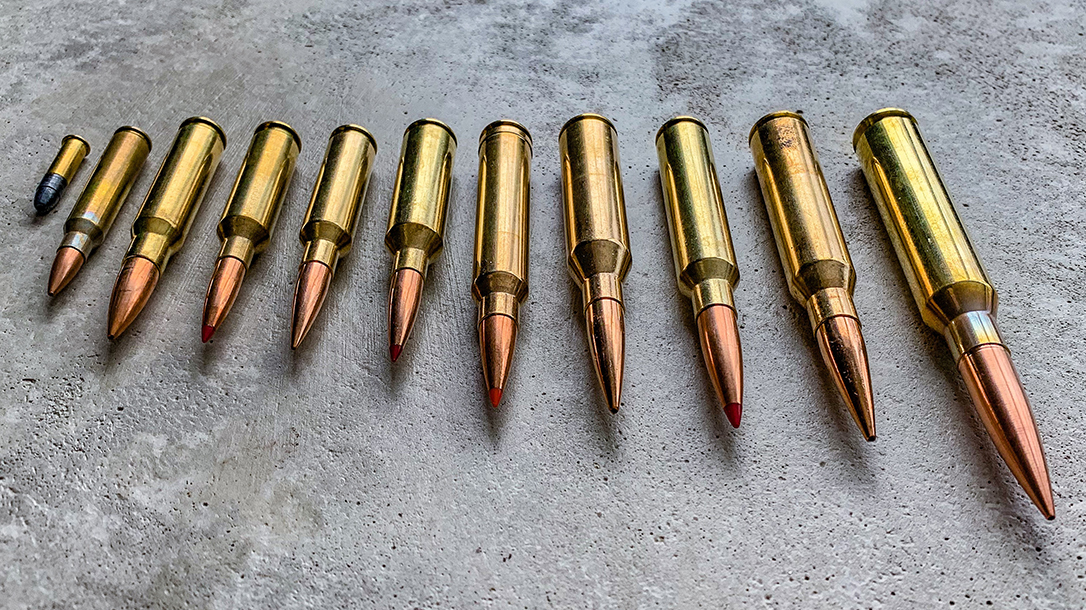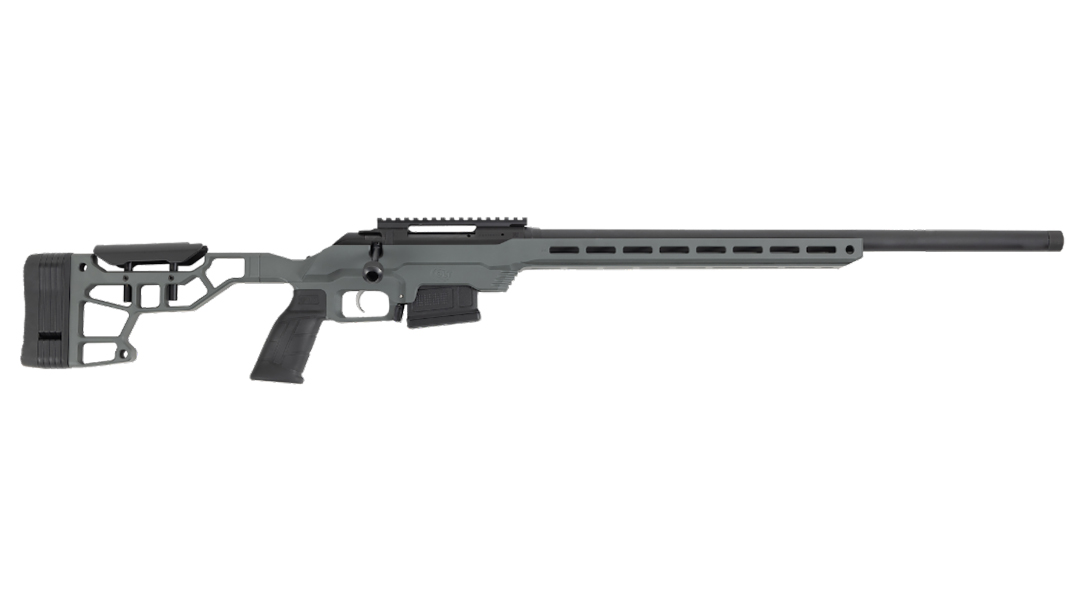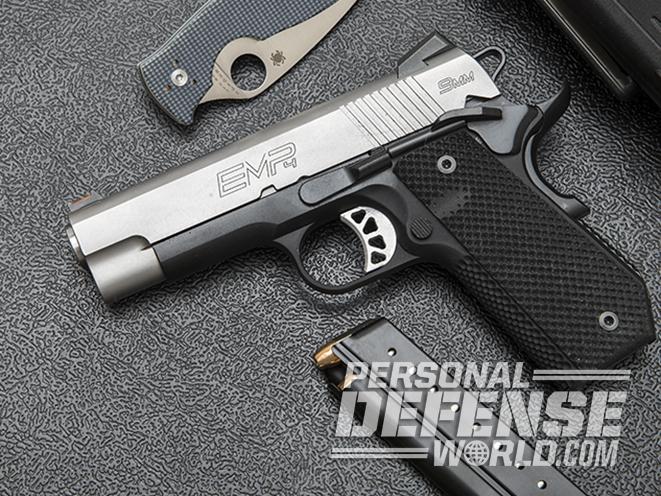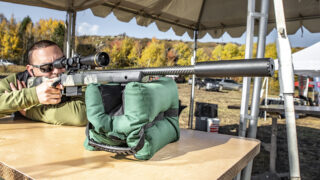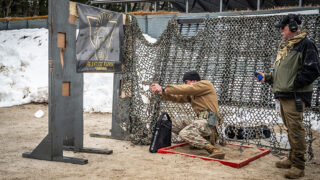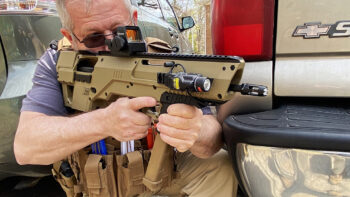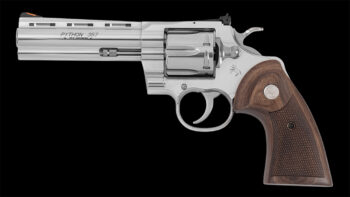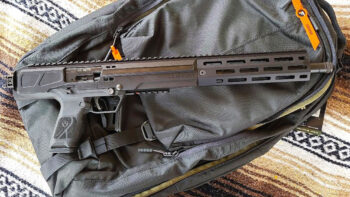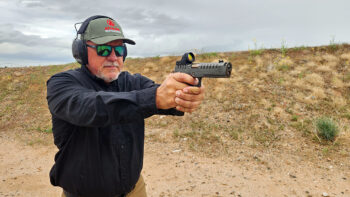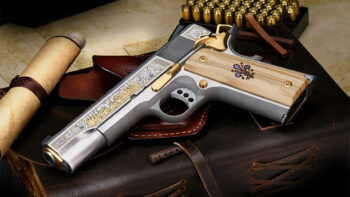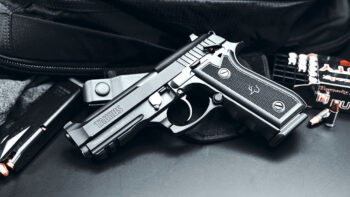What are you going to do with your ammo? This is the first question you need to ask when it comes to selecting a projectile. Shooting small groups on paper at short to moderate distances requires one set of attributes from a bullet. Shooting steel targets at 800 to 1,200 yards requires another. Plinking with the kids on the weekend is different again. Evaluating your needs is the first part of the selection process when choosing bullet designs.
Bullet Designs & Factors
Once I’ve identified candidates based on diameter (a highly critical step), these are the six primary factors that I consider when selecting a projectile.
Ballistic Coefficient:
Basically, the ballistic coefficient (BC) of a projectile is a measure of its ability to overcome air resistance in flight. If everything else is equal, a higher BC is always better. You’ll notice that a higher BC usually comes at the expense of increased bullet weight. Over the last decade, manufacturers have done a really good job of mitigating this issue through advancements in bullet designs, however. If the BC of your bullet won’t allow enough velocity and energy to be maintained beyond your engagement range, then you’ll struggle endlessly, especially in windy conditions. BC isn’t everything, but it’s a very important part of the puzzle.
Velocity:
The velocity generated by your rifle with a bullet of a certain weight is an important factor to consider. I always run comparisons through a ballistic app or two to compare the downrange performance of a heavy-for-caliber bullet moving at a moderate speed versus a light-for-caliber bullet moving at maximum speed. Sometimes the lighter bullet wins despite its lower BC because it starts out so much faster. Sometimes the heavier bullet wins because of its higher BC.
Some matches that rely on steel targets have a muzzle velocity limit of 3,100 fps. If your rifle will launch a given bullet beyond that velocity, you can either download your ammo or select a heavier bullet that will fly at a lower velocity but with a higher BC.
Stability:
Your barrel’s twist rate will determine what bullet weights your rifle will stabilize. This is an important consideration today given the surging popularity of longer, heavier, high-BC bullets. Several bullet manufacturers are now providing the recommended rifling twist rates for their bullets right on the packages.
Reliability:
If ammo won’t fit, feed and function in your rifle, it does you no good. With match ammo, the big concern is the overall length of the loaded round. Know the internal length of your magazine and ensure that a given projectile will load at a length that fits in the magazine and chamber. Next, try test feeding from a full magazine to the last round. Semi-auto rifles generally have a more violent feeding process than bolt-action rifles, so check chambered rounds for damaged bullet tips, deformation or bullet setback.
Cost:
I don’t need to shoot the most high-tech and ultra-precise, $2-per-bullet, CNC-turned solids if I’m dinging relatively large steel targets at a local club match. I don’t need to shoot barrier-blind Gold Dots or Trophy Bonded loads while practicing weak-side positional shooting. Picking the right bullet should allow you to maximize your shooting within your budget.
Precision:
If I can’t develop a load that shoots sub-MOA groups from my rifle with a given bullet, I won’t be shooting matches with it. Some matches use relatively large steel targets, and some award points for shooting microscopic groups on paper. You’ll need to determine your own requirements.
Bullet Tips
The most common match bullets will have an open tip that is formed through a reverse-draw process in which the base of the bullet is centered in the jacket cup before the jacket is formed from rear to front. Forming an open-tip match (OTM) bullet with the reverse-draw process results in a uniform base and leads to increased precision. The downside to open-tip bullet designs is that the meplat formed by the jacket opening can be uneven and inconsistent. This leads to varying BCs and performance. Regardless of their designation, OTM bullets are among the best choices for many applications.
If the ultimate in consistency and the highest BC numbers are a must, pointing dies are usable to uniform and tighten your bullet tips. This can increase BCs by several percentage points and significantly reduce dispersion at extended range. Several manufacturers have begun offering pointed bullets as standard offerings. The Nosler Reduced Drag Factor (RDF) line features pointed tips, and several Sierra and Berger match bullets are now pointed.
Tipped bullets have become hugely popular and offer a host of positive attributes to match shooters. Where the reverse-draw process may result in uneven meplats, the pointy end of a tipped bullet is uniform and consistent. Most of these bullet tips are molded from plastic, so they can be made practically identical in tremendous volumes.
Ogive Overview
This is where the diameter of the bullet increases from its minimum size to its maximum size. The rate of increase in the ogive diameter has a significant impact on the bullet’s aerodynamic efficiency. Generally, the longer the ogive, the higher the bullet’s BC will be, but there’s more to it than length. Viewed from its profile, the ogive is an arc. We use the radius of this arc to classify an ogive as either tangent or secant. This topic alone could make another article altogether, but the short version is that a more tangent ogive will be forgiving of discrepancies in seating depth, and a more secant ogive will be more aerodynamically efficient. Very-low-drag (VLD) bullets feature slick and efficient secant ogives that lead to high BCs, but may be difficult and unforgiving to tune for greatest precision.
The point at which the bullet’s diameter has increased enough to engage the lands of your rifle barrel plays a critical role in how your bullet enters the bore. This is where bullet designers have been making their money. Instead of having a secant or tangent ogive, many of the hottest bullets on the market now have both profiles. The forward portion of the ogive will have a secant profile, and the small portion immediately ahead of the bearing surface will have a tangent profile. This gives us the best of both worlds. The Berger Hybrid line is the most well-known and popular example of this style.
Shank & Base
Behind the ogive is the shank, or bearing surface. This is the full-diameter portion of the bullet that actually engages the rifling of your barrel. The longer the bearing surface, the greater the pressure, given identical diameter. This is simply a function of the amount of copper or gilding metal in contact with the steel bore.
Behind the bearing surface is the bullet’s base, almost universally configured in one of two ways. Older bullets in the “vintage” territory have flat-base bullet designs. Basically, the bullet’s bearing surface just stops, and that’s the end of the bullet. Jokes aside, there is some advantage to a flat base. In fact, flat-base bullets have at least a theoretical advantage over boat-tail bullets at short distances. The flat base creates a generally stable exit from the barrel’s muzzle. This leads to minimized yaw and rapid settling of the bullet along its path, both of which increase precision.
Flat bases lead to abysmal BCs, however. With a flat-base bullet, there is a sharp transition for the flow of air around the base of the bullet. This causes turbulence and drag, which slow the bullet quickly. Very light-for-caliber bullets will almost necessarily be flat-based. The 110-grain, .30-caliber bullets made popular by the 300 Blackout are an example of this.
For precision shooters, the boat-tail is practically ubiquitous. Boat-tail bullets have tapered bases of varying lengths and angles. These tapered bases ease the flow of air around the shank of the bullet and into the space behind the bullet. This significantly reduces drag and increases the efficiency of the projectile in flight. If you want to maximize the range of your rifle, choosing a boat-tail bullet can be a big part of the solution.
Bullet Designs & the Best Options
In the PRS world, mid-sized 6mm cartridges dominate. The 6.5 Creedmoor dethroned the .308 Winchester, and the 6mm Creedmoor stole much of its big brother’s thunder. Smaller 6mm cartridges like the Dasher are more popular than ever.
Among the most popular 6mm bullets are the Berger 105-grain Hybrid, the Hornady 108-grain Extremely Low Drag Match (ELD-M) and the Sierra 110-grain MatchKing. Barnes has a new 112-grain 6mm bullet with a Doppler- verified G1 BC of 0.624. Hornady also has just released new A-Tip bullets, and several members of Team GA Precision are switching over to the 110-grain 6mm A-Tip with its 0.604 G1 BC. All of these are lead-core, jacketed boat-tail bullets made to high levels of precision and built for match shooting.
Where they differ is at the nose. The Berger is a hybrid ogive-pointed, open-tipped, boat-tail projectile. The Sierra is also a pointed, open-tipped boat-tail that Sierra describes as having “a unique bearing-surface-to-ogive junction that uses the same 1.5-degree angle commonly found in many match rifle chamber throats.” The Hornady ELD-M uses a polymer tip, while the A-Tip uses a machined aluminum tip. All of these are excellent choices and represent a small portion of each manufacturer’s line.
Regardless of your shooting goals and requirements, there are enough great bullets on the market that you can find the best choice for your application with a little knowledge and load development. The criteria detailed here may not be perfect for everyone, but they provide a solid starting point based on decades of use and refinement.










